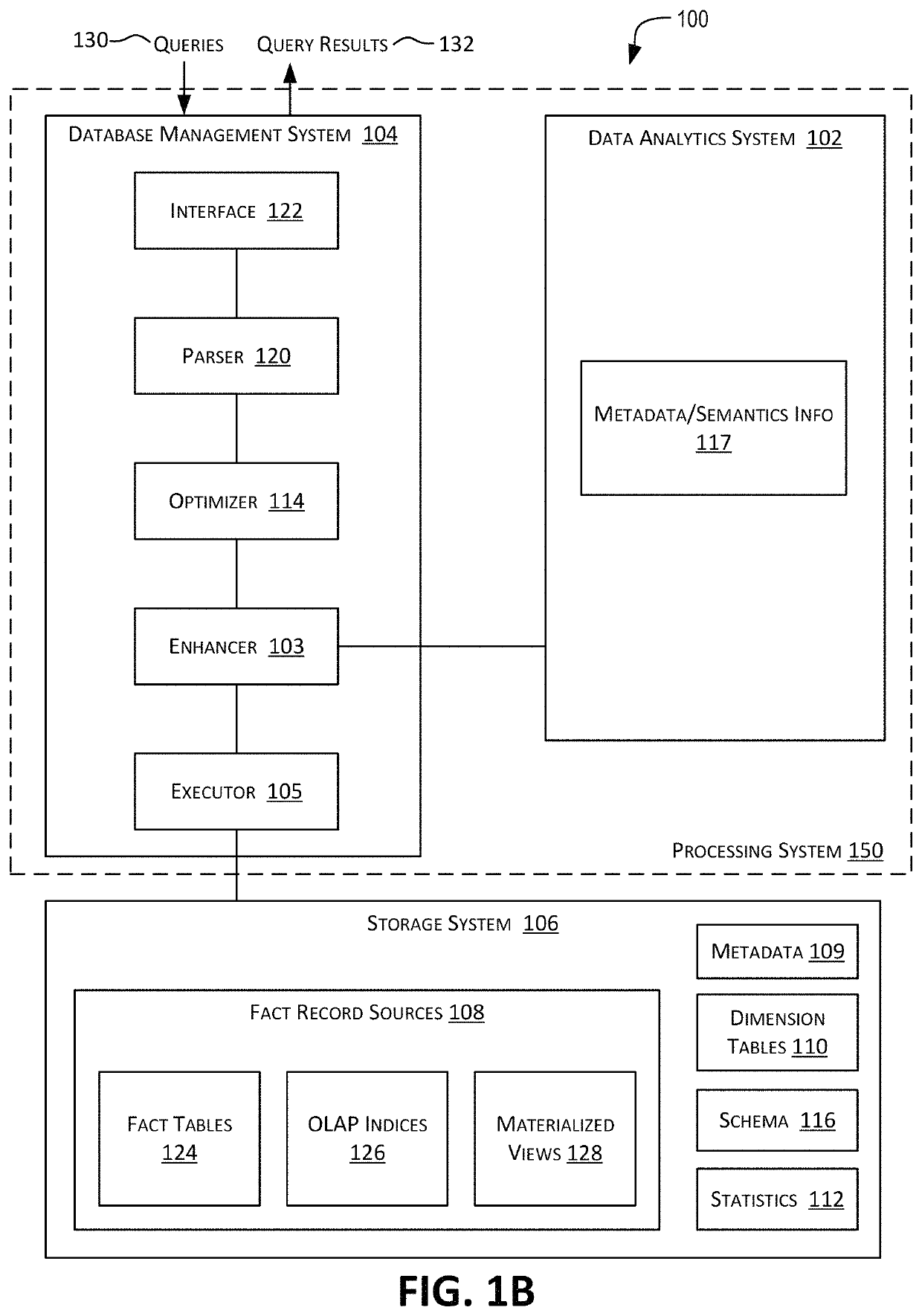Dimension context propagation techniques for optimizing SQL query plans
a technology of dimension context and optimization technique, applied in the field of dimension context propagation techniques for optimizing sql query plans, can solve the problem that the overall cost of scanning/reading and/or processing fact records in the enhanced query plan is a lot less than the original query plan, and achieve the effect of enhancing query execution performan
- Summary
- Abstract
- Description
- Claims
- Application Information
AI Technical Summary
Benefits of technology
Problems solved by technology
Method used
Image
Examples
Embodiment Construction
[0048]In the following description, for the purposes of explanation, specific details are set forth in order to provide a thorough understanding of certain inventive embodiments. However, it will be apparent that various embodiments may be practiced without these specific details. The figures and description are not intended to be restrictive.
[0049]The present disclosure relates generally to techniques for efficient execution of analytical queries such as interactive ad-hoc database queries. For a query, such as a SQL ad-hoc query, the query plan generated for the query is optimized and enhanced and rewritten as an optimized or enhanced query plan. The enhanced query plan, when executed, uses fewer CPU cycles than the original non-optimized query plan and thus executes faster than the original query plan. As a result, the query for which the enhanced query plan is generated executes faster without compromising the results obtained or the data being queried. In certain embodiments, t...
PUM
 Login to View More
Login to View More Abstract
Description
Claims
Application Information
 Login to View More
Login to View More - R&D
- Intellectual Property
- Life Sciences
- Materials
- Tech Scout
- Unparalleled Data Quality
- Higher Quality Content
- 60% Fewer Hallucinations
Browse by: Latest US Patents, China's latest patents, Technical Efficacy Thesaurus, Application Domain, Technology Topic, Popular Technical Reports.
© 2025 PatSnap. All rights reserved.Legal|Privacy policy|Modern Slavery Act Transparency Statement|Sitemap|About US| Contact US: help@patsnap.com



